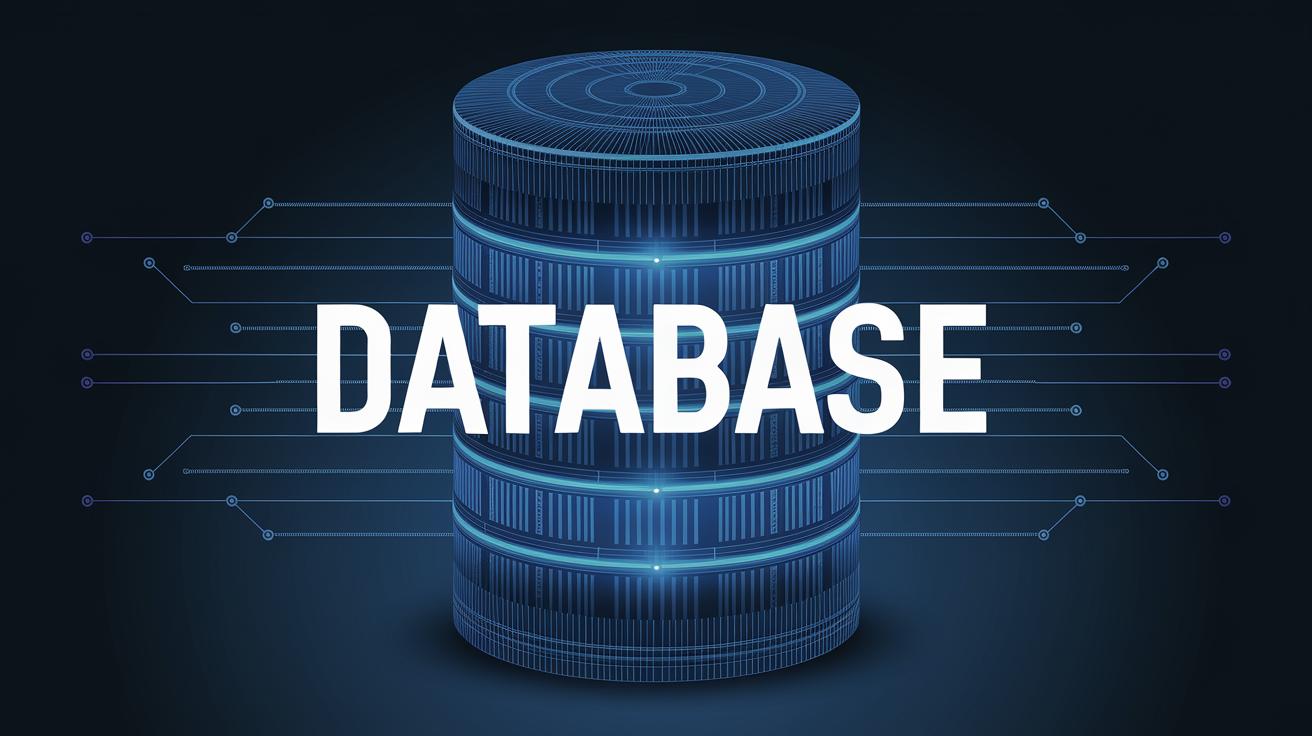Understanding Databases: An In-depth Guide
In the ever-evolving digital age, databases play a critical role in the seamless operation of organizations by efficiently managing vast volumes of data. This comprehensive guide delves into the essence of databases, exploring their types, components, and challenges. With a look at the past, present, and future of databases, we aim to shed light on how they drive business decisions and innovations. Whether you’re keen on understanding relational databases or curious about emerging models like self-driving databases, this guide provides you with a well-rounded knowledge base, supporting effective data management strategies and solutions.
Data Management: The Backbone of Organizational Success
Data management is the process of ingesting, storing, organizing, and maintaining data created and collected by an organization. This discipline forms the backbone of any successful database system, ensuring that data is not only accessible but also reliable and secure. Effective data management can significantly enhance decision-making, reduce operational costs, and improve overall business efficiency.
At its core, data management encompasses various processes such as data governance, data quality, and data integration. Together, these elements work towards creating a streamlined system that handles data throughout its entire lifecycle. By leveraging proper data management strategies, organizations can harness their data’s full potential, turning raw numbers into actionable insights and competitive advantages.
What is a Database (DB)?
A database is a systematically organized collection of structured information or data. Typically stored electronically in a computer system, databases are managed by Database Management Systems (DBMS) which facilitate the creation, retrieval, update, and administration of databases. Databases are crucial in storing large amounts of data, ensuring that it is accessible and secure.
Modern databases are notable for their ability to handle different kinds of data, from structured text and numerical data to complex data types such as images and multimedia files. They provide an efficient way to process and analyze this data, allowing organizations to derive meaningful insights, conduct queries, and generate reports with ease.
What are Databases Used For?
Databases serve a multitude of purposes across various industries, underpinning operations in sectors such as finance, healthcare, and retail. They ensure data is consistently available and accurate, supporting business applications ranging from transaction processing to analytics and reporting.
For businesses, databases power customer relationship management (CRM) systems, enterprise resource planning (ERP) software, and inventory management solutions. They enable real-time operations across online platforms, foster collaboration in cloud-based applications, and maintain audit trails to comply with regulatory requirements, making them indispensable to modern enterprises.
Types of Databases
Relational Databases
Relational databases organize data into tables with predefined relationships, which makes them highly adaptable for complex queries and data integrity maintenance. SQL (Structured Query Language) is frequently used to manage and interact with relational databases, which remains a popular choice due to its robust framework and comprehensive data support.
Distributed Databases
Distributed databases consist of multiple interconnected databases spread across different locations. This setup increases redundancy and improves the robustness of data storage. They are essential for organizations that operate across various geographical boundaries requiring synced and reliable data access.
Cloud Databases
Cloud databases are hosted on a cloud computing platform, offering flexibility, scalability, and increased accessibility. They eliminate the need for physical hardware, promoting cost savings and allowing businesses to scale their database needs dynamically according to demand.
NoSQL Databases
NoSQL databases are designed to handle large volumes of unstructured or semi-structured data. With their ability to scale out horizontally, NoSQL databases support big data applications and real-time web applications that demand fast, flexible data storage solutions.
Object-Oriented Databases
Object-oriented databases store data in the form of objects, similarly to object-oriented programming. This design makes them optimal for applications that require complex data representations and relationships, including computer-aided design and engineering applications.
Graph Databases
Graph databases revolve around relationships, storing data in nodes and edges that directly map connections. Highly effective in analyzing interconnected data, graph databases are utilized in social networks, logistics, and recommendation engines.
Multimodel Databases
Multimodel databases allow the use of different database models within a single system, giving developers the flexibility to manage data in varied ways without having to shift between multiple platforms. This capability is particularly advantageous for large-scale projects that involve diverse datasets and storage needs.
Self-driving Databases
Self-driving databases are the pinnacle of modern database management systems, employing machine learning to automate administrative tasks such as tuning, backing up, and patching. These databases minimize the need for human intervention, reducing the potential for error and increasing operational efficiency.
Data Warehouses
Data warehouses are specialized databases optimized for analysis and reporting. They aggregate data from different sources, providing historical records that businesses use for trend analysis, forecasting, and decision support systems.
What are the Components of a Database?
The core components of a database include tables, queries, forms, reports, indexes, and database schemas. Tables are the fundamental structure that holds data, while queries are requests for data retrieval based on specific criteria. Forms allow users to add or modify the data, and reports compile data into an easily comprehensible format for analysis.
Indexes improve data retrieval speed and performance, and schemas provide a blueprint of how data is organized within a database. Together, these components create an ecosystem for efficient data management, ensuring quick access, security, and clarity.
What are Database Challenges?
Despite the benefits, databases come with their share of challenges. Scalability is a major concern as organizations expand, requiring databases to handle larger data volumes efficiently without compromising performance. As data grows, ensuring consistency and security becomes increasingly demanding.
Additionally, database maintenance presents a challenge in terms of backup, recovery, and software updates. However, with advancements in technology and the emergence of sophisticated database management tools, many of these challenges can be managed effectively.
What is a Database Management System?
A Database Management System (DBMS) is a software suite designed to define, manipulate, retrieve, and manage data in a database. DBMSs ensure that data is consistently organized and easily accessible, operating as the intermediary between the database and the users.
Popular DBMS platforms, such as Oracle, MySQL, and Microsoft SQL Server, provide comprehensive solutions for various database management tasks. These systems facilitate data integrity, security, and consistency, simplifying the complexities involved in organizing and handling data.
Evolution of Databases
The history of databases dates back to the 1960s with hierarchical data structures, evolving into the relational model in the 1980s. The advent of the internet ushered in web-based and NoSQL databases, transforming how data is managed and accessed.
Over time, databases have continuously adapted to accommodate new technologies and increased data demands, resulting in the sophisticated systems we see today. Each evolution brought renewed capability and potential, supporting the growing needs of an interconnected world.
What is the Future of Databases?
Looking ahead, the future of databases is set to embrace intelligent systems that leverage machine learning and AI to anticipate user needs and automate tasks. Cloud-native databases will continue to gain traction as they offer flexible storage solutions without compromising on performance.
Furthermore, as data privacy concerns rise, databases will need to adopt advanced security features to protect sensitive information. The embrace of multi-modal systems capable of managing diverse data types under a single umbrella will likely become the norm, driving innovation in how data is used and understood.
Lessons Learned
| Section | Summary |
|---|---|
| Introduction to Data Management | A structured approach to handling data, crucial for business efficiency and innovation. |
| What is a Database? | Organized collections of structured or unstructured data, critical for business operations. |
| Uses of Databases | Support various business applications, from transaction processing to analytics. |
| Types of Databases | Include relational, distributed, cloud, NoSQL, and more, each with unique features. |
| Components of a Database | Tables, queries, indexes, and schemas form the building blocks of database systems. |
| Database Challenges | Include scalability, security, and maintenance, met with modern tools and techniques. |
| Database Management Systems | Software for data organization, ensuring accessibility and integrity. |
| Evolution and Future of Databases | From hierarchical to intelligent systems, evolving with technology and user needs. |
This blog post is structured in HTML format, utilizing various headings and subheadings to address different aspects of databases. Each section provides in-depth insights, aimed at educators, industry professionals, and anyone interested in understanding this pivotal technological component.


